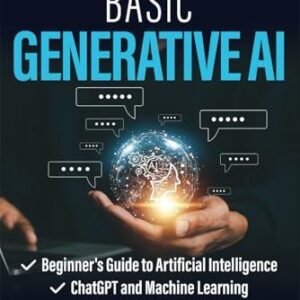In the rapidly evolving landscape of modern business, the ability to harness data-driven insights is no longer a luxury but a necessity. As organizations strive to maintain a competitive edge, the integration of Artificial Intelligence (AI) tools has emerged as a transformative strategy to enhance decision-making processes. By automating data analysis and providing predictive analytics, AI empowers leaders to make informed choices based on real-time information and trends. This article delves into the myriad ways businesses can leverage AI technologies to optimize their decision-making frameworks, from improving operational efficiencies to forecasting market shifts. As we explore the practical applications and strategic benefits of these tools, it becomes clear that the future of business decision-making is not just about making choices; it’s about making smarter, more agile decisions that position organizations for sustained success in an increasingly complex environment.
Table of Contents
- Understanding AI Tools and Their Impact on Business Decision-Making
- Identifying Key Areas for AI Integration in Business Processes
- Establishing a Framework for Effective AI Implementation
- Evaluating Success: Metrics for Measuring AI-Driven Decision Outcomes
- Concluding Remarks
Understanding AI Tools and Their Impact on Business Decision-Making
AI tools have revolutionized the landscape of business decision-making by enabling organizations to process large amounts of data with unprecedented speed and accuracy. By utilizing algorithms and machine learning techniques, businesses can now analyze trends, identify patterns, and make forecasts that were previously unachievable. This capability facilitates more informed decisions, allowing companies to react swiftly to market changes. The integration of AI can be seen in various facets of business operations, from optimizing supply chains to enhancing customer service through predictive analytics.
The impact of AI tools extends beyond mere efficiency; they also empower businesses to innovate and differentiate themselves in a competitive marketplace. Key benefits of implementing AI include:
- Data-Driven Insights: AI systems can uncover hidden insights from complex datasets, guiding strategic initiatives.
- Automation of Routine Processes: Automation reduces the burden on staff, allowing them to focus on high-level strategies.
- Enhanced Customer Experience: AI-driven personalization tools improve customer interactions and satisfaction.
To provide a clearer vision of how AI tools can be practically applied, consider the following table highlighting various AI applications and their corresponding business outcomes:
| AI Application | Business Outcome |
|---|---|
| Predictive Analytics | Improved forecasting accuracy |
| Chatbots | Increased customer engagement |
| Fraud Detection | Reduced financial losses |
| Sentiment Analysis | Enhanced brand reputation management |
Identifying Key Areas for AI Integration in Business Processes
To effectively harness the power of AI, businesses must first pinpoint the critical areas wherein integration can yield the most significant impact. This involves a thorough analysis of existing workflows and processes where decision-making lines are drawn. By focusing on the following aspects, organizations can prepare a solid foundation for their AI initiatives:
- Data Management: Streamlining data collection and analysis, ensuring that AI systems have access to quality data.
- Customer Insights: Leveraging AI to analyze customer behavior and preferences, leading to more informed marketing strategies.
- Operational Efficiency: Identifying repetitive tasks that can be automated, allowing employees to focus on higher-value activities.
- Risk Assessment: Utilizing predictive analytics to better foresee potential risks and mitigate them before they escalate.
Once key areas are identified, businesses can deploy AI tools tailored to enhance their decision-making capabilities. The following factors should be considered when selecting the right AI tools:
| AI Tool | Application | Benefit |
|---|---|---|
| Machine Learning Algorithms | Data Analysis | Improved accuracy in predictions |
| Chatbots | Customer Service | 24/7 support, reduced workload |
| Natural Language Processing | Sentiment Analysis | Better understanding of customer feedback |
| Robotic Process Automation | Task Automation | Increased efficiency and accuracy |
Establishing a Framework for Effective AI Implementation
To harness the full potential of artificial intelligence in business decision-making, it is essential to create a robust framework that guides the implementation process. This framework should encompass a strategic vision aligned with the organization’s goals, ensuring that AI initiatives drive value while minimizing risks. Key components of this framework might include:
- Clear Objectives: Define what success looks like—be it enhancing efficiency, improving customer satisfaction, or driving revenue growth.
- Stakeholder Engagement: Involve key players from various departments early in the process to ensure buy-in and gather diverse perspectives.
- Data Governance: Establish a data management strategy to ensure data quality, availability, and security, as these are fundamental to effective AI solutions.
- Iterative Testing: Adopt an agile approach where prototypes are developed and tested, allowing for adjustments based on real-world feedback.
Moreover, ensuring an ongoing evaluation of AI tools is crucial. Organizations should assess tool performance by developing a set of key performance indicators (KPIs) aimed at measuring effectiveness. Below is a suggested KPI framework:
| KPI | Description | Target |
|---|---|---|
| User Adoption Rate | Percentage of employees actively using the AI tools | 80%+ within 6 months |
| Decision Accuracy | Percentage improvement in the accuracy of decisions made | 15%+ increase annually |
| Cost Savings | Reduction in operational costs due to AI implementation | 20% reduction within the first year |
Evaluating Success: Metrics for Measuring AI-Driven Decision Outcomes
Measuring the impact of AI-driven decisions requires specific metrics that align with both short-term and long-term business goals. Key Performance Indicators (KPIs) serve as fundamental benchmarks for evaluating performance. Organizations should focus on quantifiable metrics such as:
- Revenue Growth: Assessing how AI-enhanced decisions affect overall sales.
- Cost Reduction: Tracking efficiencies gained through AI interventions.
- Customer Satisfaction: Measuring improvements in customer experience due to data-driven insights.
- Time-to-Decision: Evaluating the reduction in the decision-making process duration.
To further refine insights, companies can employ advanced data analytics to compare predicted outcomes versus actual results. Utilizing statistical methods such as regression analysis can unveil trends and inform future strategies. Below is a simplified table illustrating hypothetical outcomes:
| Decision Type | Predicted Outcome | Actual Outcome | Variance |
|---|---|---|---|
| Product Launch | 20% Revenue Increase | 15% Revenue Increase | -5% |
| Cost-Cutting Initiative | 10% Cost Reduction | 12% Cost Reduction | +2% |
| Marketing Campaign | 30% Increase in Engagement | 25% Increase in Engagement | -5% |
Concluding Remarks
integrating AI tools into business decision-making processes stands as a transformative strategy that empowers organizations to navigate complex market landscapes with enhanced agility and precision. As we have explored, these technologies not only streamline data analysis and forecasting but also foster innovative approaches to problem-solving and strategic planning. Embracing AI is no longer just a competitive advantage; it is a catalyst for sustainable growth and improved operational efficiency.
To remain relevant and ahead of the curve, businesses must prioritize the adoption of these advanced technologies, ensuring that their teams are equipped with the necessary skills and insights to leverage AI effectively. As we look to the future, the capacity to harness the power of artificial intelligence will undoubtedly define industry leaders and pioneers in the evolving commercial landscape.
By initiating this journey today, organizations can cultivate a data-driven culture that supports informed decision-making and drives long-term success. The integration of AI tools represents not just an investment in technology, but a commitment to excellence in leadership and a proactive response to the ever-changing demands of the market.





